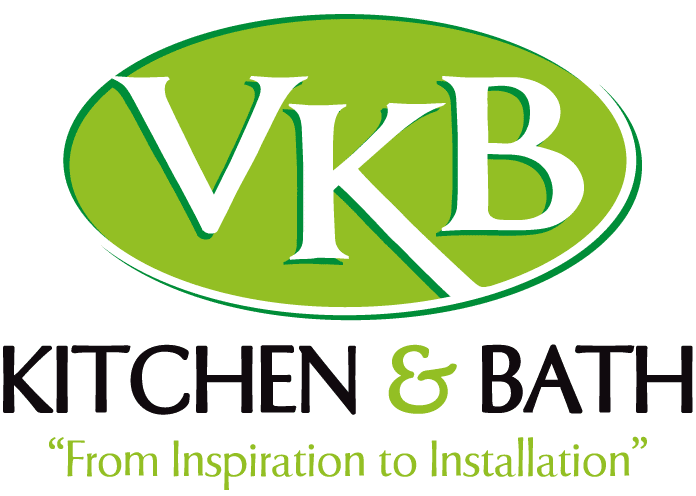Are you planning to finance kitchen remodeling with bad credit? In this comprehensive guide, we’ll walk you through five effective strategies to finance your dream kitchen renovation, even with bad credit. Let’s explore your options and turn your kitchen remodel dreams into reality.
Personal Loans Customized for Finance Kitchen Remodeling with Bad Credit
 If you’re dealing with a less-than-perfect credit score, there are specialized personal loans tailored to your needs. While these loans may come with slightly higher interest rates due to the associated risk, they are designed to assist individuals with credit challenges. It’s essential to shop around and compare different loan offers to find one that aligns with your kitchen remodeling plans without straining your finances.
If you’re dealing with a less-than-perfect credit score, there are specialized personal loans tailored to your needs. While these loans may come with slightly higher interest rates due to the associated risk, they are designed to assist individuals with credit challenges. It’s essential to shop around and compare different loan offers to find one that aligns with your kitchen remodeling plans without straining your finances.
Finding the Right Personal Loan
When searching for a personal loan, look for lenders who specifically cater to borrowers with bad credit. These lenders understand the challenges you face and are more likely to offer competitive terms. Consider online lenders, credit unions, or community banks, as they may have more flexible criteria. Remember, comparing offers from multiple lenders can help you secure a deal that suits your financial situation.
Preparing Your Loan Application
To increase your chances of approval, be prepared when applying for a personal loan. Gather essential documents such as proof of income, employment history, and a list of your existing debts. Demonstrating your ability to repay the loan can positively influence the lender’s decision.
Managing Loan Repayments
Once you secure a personal loan, it’s crucial to manage your repayments responsibly. Timely payments not only help you maintain a good relationship with the lender but also contribute to improving your credit score over time. Create a budget that includes your monthly loan payments to ensure you stay on track.
Tap into Home Equity: Loans and Home Equity Lines of Credit (HELOCs)
Homeowners have a valuable asset at their disposal: home equity. Utilizing home equity through loans or Home Equity Lines of Credit (HELOCs) is a smart way to access funds for your kitchen remodel. These options typically offer more favorable interest rates since they use your home’s equity as collateral. However, proceed with caution and ensure timely payments to avoid putting your home at risk. To read more about HELOCs, click here.
Understanding Home Equity Loans
A home equity loan allows you to borrow a lump sum of money using your home’s equity as collateral. The interest rates for these loans are generally fixed, providing predictability in your monthly payments. It’s essential to calculate how much equity you have in your home and determine the loan amount you need for your kitchen remodel.
Exploring Home Equity Lines of Credit (HELOCs)
HELOCs work like a credit card with a revolving credit limit based on your home’s equity. You can borrow as needed, making it a flexible option for financing your remodel. HELOCs often come with variable interest rates, so it’s important to budget for potential rate fluctuations.
Safeguarding Your Home
While using home equity can be advantageous, it’s crucial to make payments consistently. Falling behind on payments could put your home at risk of foreclosure. Carefully consider your financial stability and ability to manage the additional debt before tapping into your home equity.
Utilize Your Assets: Collateral-Based Loans for Bad Credit Kitchen Remodel
Do you own assets like a car, savings, or other valuables? These assets can serve as collateral and make it easier to secure a loan, even with bad credit. However, keep in mind the potential risk involved. If you struggle with loan repayments, you could risk losing the collateral you put up. Carefully evaluate this option and ensure you can manage the repayments.
Collateral-Based Loan Options
Collateral-based loans come in various forms, including:
- Secured Personal Loans: These loans use collateral to secure the borrowed amount, often resulting in lower interest rates.
- Title Loans: You can use your vehicle’s title as collateral to secure a loan. Be cautious, as defaulting on title loans can lead to the loss of your vehicle.
- Savings-Secured Loans: If you have a savings account, you can use it as collateral for a loan. This option allows you to access funds while keeping your savings intact.
Evaluating Collateral Risks
Before proceeding with a collateral-based loan, carefully assess the risks. Understand the consequences of defaulting on the loan and the impact it may have on your assets. Ensure you have a solid plan for repaying the loan to protect your valuables.
The Power of Co-Signers and Seeking Out Flexible Lenders
Having someone with a good credit score co-sign your loan can greatly improve your chances of approval and lead to better loan terms. Don’t limit yourself to traditional banks; explore peer-to-peer lending platforms and credit unions. These institutions often have more lenient criteria regarding credit scores and may be more willing to work with your situation.
Co-Signers and Their Role
A co-signer is someone with a strong credit history who agrees to take responsibility for the loan if you cannot make payments. Their presence reassures lenders, making them more willing to lend to individuals with bad credit. However, remember that co-signers also bear the responsibility of repaying the loan if necessary.
Alternative Lending Sources
Traditional banks may have stringent credit requirements, but alternative lending sources can be more accommodating. Consider online lenders and credit unions that focus on providing loans to borrowers with varying credit histories. Research the options available in your area to find the best fit for your needs.
Exploring Government Programs and Improving Your Credit Score
Government assistance programs and grants are available to support home improvement projects. It’s worth researching these options as they can provide significant financial relief. Simultaneously, focus on improving your credit score. A better credit score can open up more financial opportunities in the future, giving you greater flexibility and options.
Government Assistance Programs
Several government programs offer financial support for home improvements. These programs may provide grants, low-interest loans, or tax incentives for energy-efficient upgrades. Explore options at the federal, state, and local levels to see if you qualify for assistance.
Steps to Improve Your Credit Score
While seeking financing options, don’t neglect the importance of improving your credit score. Here are some steps to help boost your creditworthiness:
- Review Your Credit Report: Obtain a copy of your credit report and look for errors or inaccuracies that could be negatively impacting your score.
- Pay Bills On Time: Consistently paying bills and debts on time is one of the most significant factors in improving your credit score.
- Reduce Credit Card Balances: High credit card balances relative to your credit limit can harm your credit score. Aim to reduce outstanding balances.
- Avoid New Credit Applications: Opening too many new credit accounts in a short period can lower your credit score. Be selective when applying for credit.
Bonus: The Importance of Planning and Budgeting for Your Remodel
Before embarking on your kitchen remodel, ensure you have a well-thought-out plan and a strict budget in place. Consider seeking advice from a financial advisor to navigate your unique financial situation. With careful planning and budget management, achieving your kitchen remodel goals is possible, even with a less-than-perfect credit score.
Budgeting Tips
- Set Priorities: Identify the most crucial elements of your kitchen remodel and allocate funds accordingly.
- Get Multiple Quotes: Obtain quotes from multiple contractors to ensure you’re getting competitive prices.
- Account for Contingencies: Budget for unexpected expenses that may arise during the renovation process.
- Track Expenses: Keep a detailed record of all expenditures to stay on top of your budget.
Seeking Professional Guidance
A financial advisor can provide valuable insights into managing your remodel budget effectively. They can help you make informed decisions and avoid overspending, ensuring that your project stays within your financial means.
Conclusion: Begin Your Kitchen Renovation Journey Now
This guide offers a roadmap to financing your kitchen remodeling with bad credit. While it may seem challenging, with the right support and financial strategies, you can make your dream kitchen a reality. If you have questions or need personalized advice, our dedicated representatives are here to assist you. Visit our website to find more detailed information and connect with us. Let’s work together to bring your dream kitchen to life!
Follow us on Instagram for more tips and inspiration. We’re eager to help you transform your kitchen, regardless of your credit situation. Let’s make your dream kitchen a reality!”



